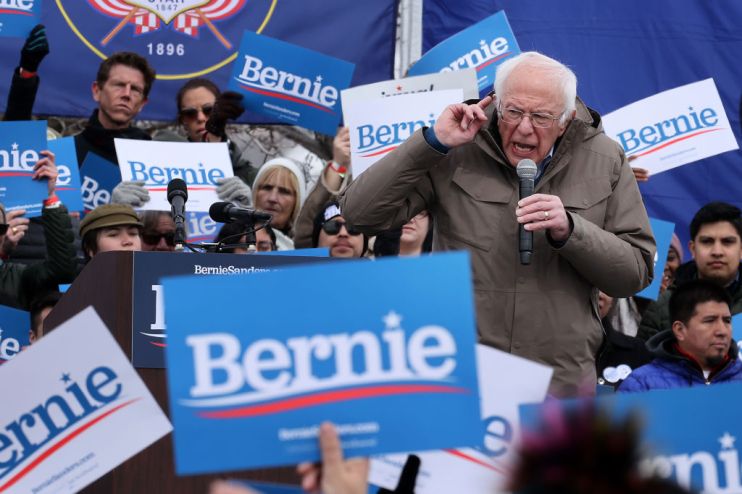From Yes We Can to Feel The Bern — American politics is a masterclass in messaging

US politics is a fascinating watch, especially if you’re interested in branding, communications, and the successes and failures of connecting with audiences.
And for those that follow it through this lens, right now is prime-time viewing.
As Democrats vote on their candidate to take on Donald Trump in November, the political battlegrounds in the US are becoming case studies in communications.
Power of money
Everything is easier when you have a big budget. Michael Bloomberg has reportedly spent over $500m on TV and social ads, taking him from nowhere to 19 per cent in some national polls last week.
US politics is often about raising money and proving to your donors that you warrant their backing. That’s not a concern for billionaire candidates. Bloomberg has essentially bought a place in the running without doing all the hard yards or having a rallying point of difference.
The challenger movement
Everyone loves an outsider — someone who has taken on the mainstream and revolutionised a category. Barack Obama was the quintessential challenger brand. Trump also harnessed that route, playing the role of the anti-Washington champion of ordinary folk.
Today, Bernie Sanders is the challenger brand, having galvanised an energised youthful base. Joe Biden, as a previous vice president, is the established Democrat, and despite his big South Carolina win, hasn’t managed to generate the excitement or movement style of the 78-year-old socialist.
But can Bernie bring onboard the middle ground — critical for any challenger movement looking to go mainstream? It’s what Innocent and BrewDog did, establishing a disruptive anti-corporate niche movement before hitting the mainstream.
Repeat with meaning
Throw someone one ball and they’ll catch it — throw them four and they’ll drop them all. Giving consumers one simple message and repeating it over and over can be effective. JFK’s 1960 TV ad repeated “Kennedy” 16 times in the first 15 seconds. Things have developed since then, but finding a simple message that resonates is gold dust. Obama’s “Yes We Can” phrase caught fire and enthused a movement across America. Trump’s “Make America Great Again” took it to another level.
Worryingly for the Democrats, none of the candidates have a simple, insightful message that voters can buy into. Without one, taking on the Trump machine will be tough.
In the advertising world, brands like Ronseal, Specsavers and L’oreal have perfected this simple repeated message with huge success. “Does what it says on the tin”, “Should have gone to Specsavers”, and “Because I’m worth it” have weaved their way into popular culture and become valuable assets in themselves.
Define your enemy
Recognising an enemy is a useful tool for brands and politicians alike. For all his faults, nobody can deny Trump’s brilliance at taking down his enemies. “Lyin’ Ted Cruz”, “Little Marco Rubio”, “Low Energy Jeb” — he saw off his 2016 Republican challengers with relative ease, and then moved up a level with “Crooked Hillary”.
“Sleepy Joe Biden” is this year’s target. But the main enemy in 2016 was the Washington “swamp”. Trump’s proclaiming that he would “drain it” was enormously effective in beating Hillary Clinton.
Sanders has a clearly articulated enemy in greedy corporate America, but can he get that message to resonate with enough of the country?
For brands, kicking against an enemy can be enormously effective. In its “we try harder” campaign, Avis, the second biggest car rental company in the US, took aim at category leader Hertz. It gave Avis an underdog springboard for communicating across all of its media channels and it worked a treat. Brands that know their enemies tend to have a clearer vision of themselves.
Image is everything
In politics, image is (almost) everything. Style and body language help candidates stand out, get noticed, and be liked. Obama was the consummate storyteller, every address a masterclass in engagement. If more of this had rubbed off on Biden, he might well be leading the Democratic pack. Conversely, Trump connects with his base through his all-American macho image of success and “winning” that plays well to a certain audience.
For brands, what they say is often superseded by how they say it. In an environment where consumer touch points are becoming more diverse and fragmented, tone of voice is increasingly more important.
The Democratic race reached a critical moment this week with “Super Tuesday” — but there is still all to play for. Despite Bernie’s lead and Biden’s recent comeback, nobody has truly broken through. It’s a chaotic category, with everything to play for. As an ongoing lesson in communications, it remains a fascinating watch.
Main image credit: Getty